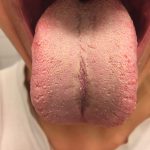List Of Medications That Cause Nystagmus

Nystagmus is a condition where the eyes move rapidly and uncontrollably. They can move:
• side to side (horizontal nystagmus)
• up and down (vertical nystagmus)
• in a circle (rotary nystagmus)
The movement can vary between slow and fast and usually happens in both eyes. The eyes may shake more when looking in certain directions. People with nystagmus may tilt or turn their heads to see more clearly. This helps to slow down eye movements.
The forms of nystagmus include:
• Infantile. Most often develops by 2 to 3 months of age. The eyes tend to move in a horizontal swinging fashion. It is often associated with other conditions, such as albinism, congenital absence of the iris (the colored part of the eye), underdeveloped optic nerves, and congenital cataracts.
• Spasmus nutans. It usually occurs between 6 months and 3 years of age and improves on its own between 2 and 8 years of age. Children with this form of nystagmus often nod and tilt their heads. Their eyes may move in any direction. This type of nystagmus usually does not require treatment.
• Acquired. Develops later in childhood or adulthood. The cause is often unknown, but it may be due to the central nervous system and metabolic disorders or alcohol and drug toxicity.
Causes & risk factors
Nystagmus is most commonly caused by a neurological problem that is present at birth or develops in early childhood. Acquired nystagmus, which occurs later in life, can be the symptom of another condition or disease, such as stroke, multiple sclerosis or trauma.
Other causes of nystagmus include:
• Lack of development of normal eye movement control early in life.
• Albinism.
• Very high refractive error, for example, nearsightedness (myopia) or astigmatism.
• Congenital cataracts.
• Inflammation of the inner ear.
• Medications such as anti-epilepsy drugs.
• Central nervous system diseases.
Symptoms
• Involuntary eye movement.
• Movement can be in one eye or both.
• Objects may appear blurry and shaky.
• Nighttime vision problems or sensitivity to light.
• Balance and dizziness.
Drug-induced Nystagmus
Drug-induced nystagmus is an involuntary eye movement that is caused by the use of certain medications or drugs. Drug-induced nystagmus can be a side effect of some medications, illicit drugs, alcohol, and other psychoactive substances. The severity and duration of drug-induced nystagmus can vary depending on the drug, dose, and individual factors such as age and health status. Treatment options for drug-induced nystagmus depend on the underlying cause and may involve adjusting the dosage or switching to a different medication.
Medications That Can Cause Nystagmus
Many medications have been reported to cause nystagmus. In this article, we will cover some of the most commonly known medications that are known to cause nystagmus:
1. Antiepileptic Drugs (AEDs)
Antiepileptic drugs (AEDs) are medications that are used to control seizures in individuals with epilepsy. Some of the most commonly used AEDs that can cause nystagmus include:
• Phenytoin (Dilantin)
• Carbamazepine (Tegretol)
• Valproic Acid (Depakene)
• Gabapentin (Neurontin)
• Lamotrigine (Lamictal)
• Topiramate (Topamax)
• Ethosuximide (Zarontin)
2. Antipsychotic Drugs
Antipsychotic drugs are medications that are used to treat various psychiatric disorders such as schizophrenia, bipolar disorder, and depression. Some of the most commonly used antipsychotic drugs that can cause nystagmus include:
• Chlorpromazine (Thorazine)
• Haloperidol (Haldol)
• Thioridazine (Mellaril)
• Clozapine (Clozaril)
• Risperidone (Risperdal)
3. Sedatives and Hypnotics
Sedatives and hypnotics are medications that are used to promote sleep and relaxation. Some of the most commonly used sedatives and hypnotics that can cause nystagmus include:
• Barbiturates (Phenobarbital)
• Benzodiazepines (Valium, Xanax)
• Zolpidem (Ambien)
4. Antiemetics
Antiemitics are medications that are used to treat nausea and vomiting. Some of the most commonly used antiemetics that can cause nystagmus include:
• Metoclopramide (Reglan)
• Prochlorperazine (Compazine)
5. Antibiotics
Antibiotics are medications that are used to treat bacterial infections. Some of the most commonly used antibiotics that can cause nystagmus include:
• Gentamicin
• Streptomycin
6. Antihistamines
Antihistamines are medications that are used to treat allergic reactions. Some of the most commonly used antihistamines that can cause nystagmus include:
• Diphenhydramine (Benadryl)
• Promethazine (Phenergan)
7. Anticonvulsants
Anticonvulsants are medications that are used to treat seizures. Some of the most commonly used anticonvulsants that can cause nystagmus include:
• Phenobarbital
• Carbamazepine (Tegretol)
• Phenytoin (Dilantin)
8. Antiarrhythmic Drugs
Antiarrhythmic drugs are medications that are used to treat irregular heart rhythms. Some of the most commonly used antiarrhythmic drugs that can cause nystagmus include:
• Amiodarone (Cordarone)
• Procainamide (Pronestyl)
• Quinidine (Quinidex)
9. Chemotherapy Drugs
Chemotherapy drugs are medications that are used to treat cancer. Some of the most commonly used chemotherapy drugs that can cause nystagmus include:
• Cisplatin (Platinol)
• Cyclophosphamide (Cytoxan)
• Vinblastine (Velban)
10. Psychotropic Drugs
Psychotropic drugs are medications that are used to treat various psychiatric disorders. Some of the most commonly used psychotropic drugs that can cause can cause nystagmus as a side effect include
• carbamazepine
• Phenytoin and Valproic acid
It’s important to note that not all individuals who take these medications will experience nystagmus, and the severity and duration of the nystagmus can vary depending on the individual and the medication. If you are experiencing nystagmus or any other side effect while taking a drug, it’s important to speak with your healthcare provider.
How To Prevent Drug-Induced Nystagmus
Preventing drug-induced nystagmus requires careful management of medication use. Here are some strategies that can help prevent drug-induced nystagmus:
1. Medication management: It’s important to carefully manage the use of any medication that has been associated with nystagmus as a side effect. This may include adjusting the dosage or switching to a different medication that does not cause nystagmus.
2. Follow medication instructions: It’s important to follow the instructions for taking medications as prescribed by your healthcare provider. Taking medications as directed can help prevent the occurrence of side effects such as nystagmus.
3. Regular check-ups: It’s important to have regular check-ups with your healthcare provider if you are taking medications that have been associated with nystagmus. This can help monitor for any signs of side effects and allow for adjustments in medication use if needed.
4. Avoid alcohol and other psychoactive substances: Alcohol and other psychoactive substances can increase the risk of nystagmus when taken with certain medications. It’s important to avoid the use of these substances when taking medications that have been associated with nystagmus.
5. Report any side effects: If you experience any side effects while taking medications, including nystagmus, it’s important to report them to your healthcare provider. Your healthcare provider can then make any necessary adjustments to your medication use to help prevent the occurrence of side effects.





